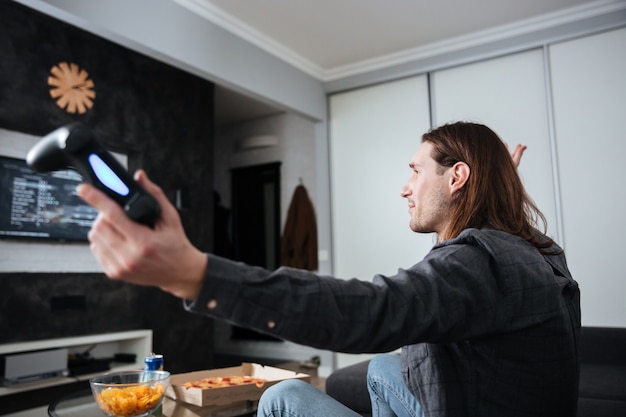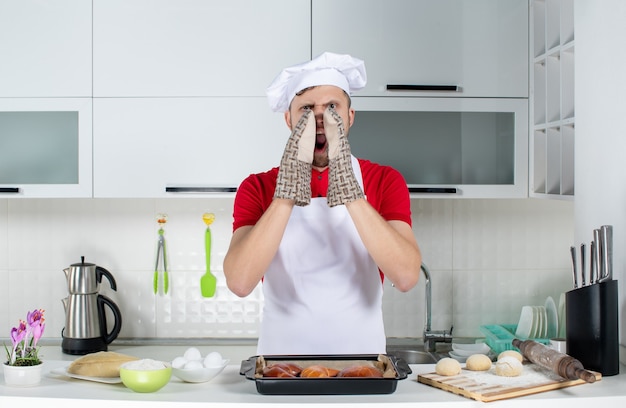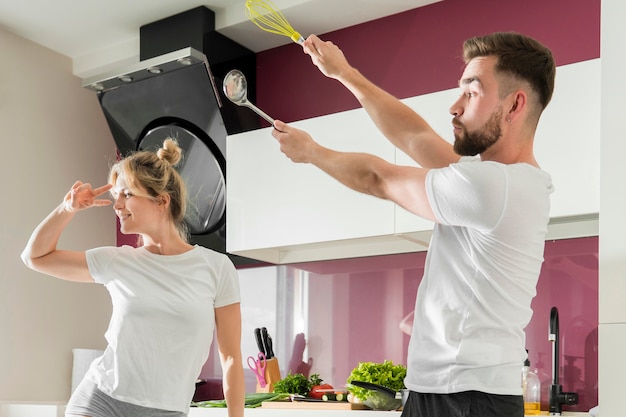You've got this shiny new convection oven, promising faster cooking times and better results. But are you really getting a speed boost, or is it all just hype? I’ve been there, feeling a mix of excitement and doubt. After years of using both convection and conventional ovens, I can tell you: yes, convection ovens generally do cook faster. But it’s not as simple as that. The type of food you're cooking, the size and shape of the dish, and even the brand of oven all play a part. Let me break down everything you need to know to make the right choice for your kitchen.
Part 1: The Basics – What’s the Difference?

Both conventional and convection ovens use heat to cook food, but they use it in different ways. Imagine it like this: a conventional oven is a cozy fireplace, radiating heat outwards. A convection oven is more like a whirlwind, swirling hot air around your food.
Convection Oven: The Fan’s the Hero
A convection oven has a fan that circulates the hot air inside the oven chamber. Picture it like this: the fan creates a tiny hurricane inside your oven, ensuring the heat reaches every corner and every surface of your food. This is what gives convection ovens their speed and even cooking abilities. It’s like a mini-food tornado, whipping up the heat and making everything cook faster and more evenly.
Conventional Oven: The Classic Method
A conventional oven works by simply heating the air inside the oven chamber using heating elements at the bottom, top, or both, depending on the oven. The heat travels to your food primarily through conduction and radiation, a bit like a warm fireplace. It's a tried and tested method that works well for many dishes, but it can lead to uneven cooking and hot spots within the oven.
Part 2: The Science Behind Speed: Why Convection Cooks Faster

Let's get into the nitty-gritty: why is convection so much faster? The secret lies in the fan! Here's how it works:
- Faster Heat Transfer: The fan acts like a tiny hot air blower, whipping the heat around the oven chamber. This constant movement means the hot air reaches your food much faster, like a hot wind blowing directly on it.
- More Even Cooking: The fan ensures the heat is spread evenly throughout the oven, preventing hot spots and ensuring your food cooks evenly on all sides. No more burnt edges and undercooked centers!
- Reduced Cooking Time: The combination of faster heat transfer and even cooking means you can generally cut your cooking time by 10-25% compared to a conventional oven. It's like having a personal assistant who helps your food cook faster!
Part 3: Real-World Proof: My Convection Oven Adventures

I remember the first time I used my convection oven, I was skeptical. It seemed too good to be true – a faster, better way to cook? Then I decided to put it to the test with a roast chicken. I usually cook it for about an hour and a half in my conventional oven. This time, I reduced the cooking time by 15 minutes using my convection oven. The result? A beautifully golden-brown chicken that was perfectly cooked, juicy, and flavorful. It was a revelation! It was like my oven had a secret superpower.
Part 4: Convection's Not Perfect: When It Might Fall Short
I wouldn't want to paint a picture that convection ovens are perfect for every dish. There are some situations where they might not be the best choice. Here's what to keep in mind:
Convection's Limitations
- Delicate Items: Convection ovens can be a bit too aggressive for delicate baked goods like cakes, pastries, or flaky biscuits. The strong airflow can dry them out or make them rise unevenly. I’ve had my fair share of baking disasters when trying to use my convection oven for these delicate treats. It's better to stick with your tried-and-true conventional oven for these delicate creations.
- Small Baking Dishes: The rapid airflow of a convection oven can cause problems for small baking dishes, as the hot air can rush past the edges, causing uneven cooking. It's best to use larger dishes, allowing the food to be enveloped by the heat more evenly.
- Roasting Large Cuts of Meat: While convection ovens excel at roasting smaller cuts of meat, large roasts can be a bit tricky. The intense heat transfer can sometimes dry out the meat, especially if it's not properly protected by fat or a covering. For large roasts, your conventional oven might be a better choice, allowing the meat to cook more gently.
Part 5: Temperature Tweaks: How to Make Convection Work for You
You might be wondering, if convection ovens cook faster, does that mean I need to adjust the temperature? The answer is: absolutely! Because of the efficient air circulation, you'll generally need to lower the temperature by 25°F (14°C) for most recipes. Think of it like this: the fan acts like a turbocharger, making the oven more efficient and requiring a slightly cooler setting.
It's crucial to remember that every oven is different. Some convection ovens have a "convection" setting that automatically adjusts the temperature, while others require you to do it manually. Always consult your oven's manual to find out how to use the convection setting properly.
Part 6: Baking: Convection's Sweet Spot
I'll admit it, I'm a bit of a baking fanatic. And for baking, convection ovens are truly a game-changer. The even heat distribution creates beautiful, evenly browned cookies, cakes, and breads. Plus, I find that my baked goods rise more consistently and have a better texture when using my convection oven. The result? A symphony of taste and texture, all thanks to the power of convection.
Part 7: Convection Oven vs. Conventional Oven: A Side-by-Side Comparison
Let's break down the pros and cons of each oven type to help you make the best decision for your needs:
| Feature | Convection Oven | Conventional Oven |
|---|---|---|
| Cooking Time | Generally faster (10-25% reduction) | Typically slower |
| Heat Distribution | More even heat distribution | Can have hot and cold spots |
| Baking | Great for cookies, cakes, breads, and other baked goods | Works well for many types of baking |
| Roasting | Excellent for smaller cuts of meat, poultry, and vegetables | Ideal for larger cuts of meat and roasts |
| Cost | Typically more expensive than conventional ovens | Generally more affordable |
| energy efficiency | Can be more energy efficient due to faster cooking times | Can be less energy efficient, depending on the model |
Part 8: The Verdict: Finding Your Perfect Match
So, which oven is right for you? The answer is: it depends. If you're a busy person who wants to cook faster and more efficiently, a convection oven might be your ideal partner in crime. But if you're a baking enthusiast who wants to ensure your delicate pastries turn out perfectly, a conventional oven might be a better fit.
Ultimately, the best way to choose is to experiment! Try both ovens with different recipes and see which one suits your cooking style and preferences. There's no right or wrong answer, just the oven that fits your kitchen like a comfy pair of slippers.
FAQs: Your Convection and Conventional Oven Questions Answered
1. Can I use any recipe in a convection oven?
You can use most recipes in a convection oven, but remember, you'll need to adjust the cooking time and temperature. Generally, reduce the cooking time by 10-25% and lower the temperature by 25°F (14°C). But always check the recipe instructions for specific recommendations for using a convection oven. Some recipes will have specific instructions for convection cooking, so always double-check before you start.
2. How do I know if my oven is truly convection?
Most convection ovens will have a "convection" setting, but some ovens also have a fan that runs even when the oven is set to "bake" or "broil." To determine if your oven is convection, check the manual or look for a fan icon on the control panel. If you're still unsure, try a convection-safe recipe and see if your food cooks faster and more evenly. It's a good way to put your oven's capabilities to the test.
3. Are convection ovens more expensive than conventional ovens?
Yes, convection ovens are generally more expensive than conventional ovens. But the price difference can vary greatly depending on the brand, size, and features of the oven. You can find affordable convection ovens, but they might not have as many features or be as durable as more expensive models. It's all about finding the best balance between price and performance for your needs.
4. Do convection ovens use more energy than conventional ovens?
This is a bit of a tricky question. Convection ovens can be more energy efficient because they cook food faster. This means you're using the oven for a shorter amount of time, saving energy in the process. However, some convection ovens might use more energy than conventional ovens, especially if they have a powerful fan. The energy efficiency will depend on the model and how you use it.
5. Can I use a convection oven to air-fry?
While convection ovens don't have the same intense heat and airflow as a dedicated air fryer, you can certainly use the "convection" setting to air-fry some foods. You might need to adjust the cooking time and temperature, and it's not recommended for all air fryer recipes. If you're serious about air-frying, it's usually best to invest in a dedicated air fryer.
I hope this has helped you understand the advantages and limitations of convection ovens and how they compare to conventional ovens. Now go forth and experiment, and let me know if you have any more questions! Happy cooking!
Everyone is watching

Prime Rib Roast Cooking Time Chart: Per Pound Guide
Cooking TipsPrime rib roast. Just the name conjures images of lavish dinners, crackling fires, and hearty laughter. It’s ...

How Long to Bake Potatoes in the Oven (Perfect Every Time)
Cooking TipsBaked potatoes are a staple in my kitchen. They're incredibly versatile, delicious, and surprisingly easy to m...

Perfect Rice Every Time: The Ultimate Guide to Cooking Rice
Cooking TipsAs a self-proclaimed foodie, I've always been a bit obsessed with rice. It's the foundation of countless cuisi...

The Ultimate Guide to Cooking Asparagus: Tips, Techniques, and Recipes
Cooking TipsAsparagus. The mere mention of this spring delicacy conjures up images of vibrant green spears, crisp and burs...

Ultimate Guide to Cooking the Perfect Thanksgiving Turkey
Cooking TipsThanksgiving. Just the word conjures up images of overflowing tables laden with delicious food, the scent of r...
